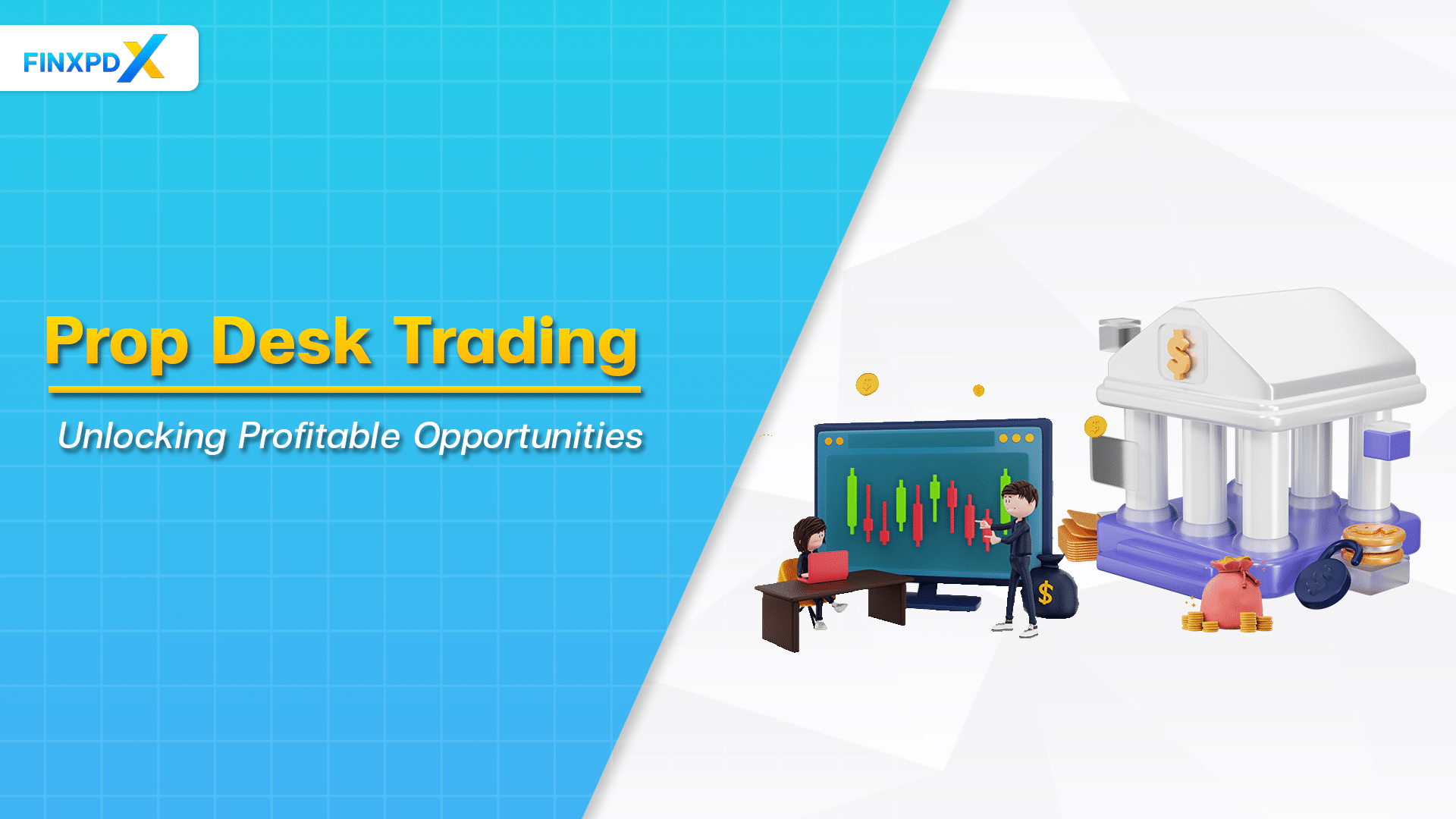Prop desk trading is a practice employed by financial institutions to engage in trading activities using their own capital. This allows them to directly participate in the financial markets and potentially profit from market movements.
In this article, we’ll explore how these institutions benefit from direct market participation, the strategies that drive their success, and the critical aspects of risk and regulatory compliance.
What Is Prop Desk Trading?
Prop desk trading, short for proprietary desk trading, refers to the practice of financial institutions using their own funds to trade in the financial markets. Unlike traditional trading, where brokers execute trades on behalf of clients using their funds, this involves the financial institution taking on the role of the trader and using its own capital to execute trades and potentially generate profits. The main objective is to capitalize on market opportunities and generate returns for the financial institution.
Key Takeaways
- Prop desk trading is the practice of financial institutions trading using their own capital.
- Establishing a prop desk trading operation involves steps like regulatory compliance, strategy development, risk management setup, and technology integration.
- Prop desk trading differs from hedge funds mainly in risk exposure, regulatory environment, and investment strategies.
- Successful prop trading contributes substantially to a financial institution’s revenue.
How Prop Desk Trading Works
Prop desk trading involves a systematic process that includes identifying market opportunities, analyzing financial instruments, and executing trades. Most traders utilize different trading strategies, such as technical analysis, fundamental analysis, and algorithmic trading, to make informed trading decisions.
When engaging in this trading, traders evaluate market trends, historical data, and various indicators to identify potential profitable trades. They consider factors such as price movements, volume, liquidity, and volatility to make informed decisions. Once a trading opportunity is identified, traders execute trades by buying or selling the selected financial instruments. This can be done manually or through automated trading algorithms.
Moreover, risk management is one of critical aspects. Traders must carefully manage and mitigate potential losses by setting risk limits, implementing stop-loss orders, and continuously monitoring and adjusting their positions. The goal is to preserve capital and maximize profitability while minimizing the impact of adverse market conditions.
Advantages and Disadvantages of Prop Desk Trading
Understanding the advantages and disadvantages is crucial for financial institutions considering this strategy. It is important to weigh the potential for higher returns and direct market participation against the risks of market volatility, regulatory compliance, and capital requirements.
Advantages
1. Potential for Higher Returns
It offers financial institutions the potential for higher returns compared to traditional trading methods. By using their own capital and executing trades directly in the financial markets, institutions can leverage market opportunities to generate profits.
2. Direct Participation in Financial Markets
Unlike traditional trading methods, it allows financial institutions to directly participate in the financial markets. This direct involvement provides institutions with greater control over their trading activities and the potential for enhanced market insights.
3. Full Control Over Trading Decisions
It gives financial institutions full control over their trading decisions. This control allows institutions to implement specific strategies, adjust positions as needed, and react quickly to market conditions.
Disadvantages
1. Market Volatility
Prop desk trading also exposes institutions to market volatility. Fluctuations in the financial markets can lead to potential losses and a decrease in overall profitability.
2. Regulatory Compliance
One of the major challenges is ensuring regulatory compliance. Financial institutions must navigate complex regulations and adhere to stringent rules to ensure transparency, accountability, and fair market practices.
3. Capital Requirements
Engaging in this trading requires significant capital. Financial institutions must have the necessary funds to support their trading activities, which can be a barrier to entry for smaller firms.
Differences Between Prop Desk Trading and Hedge Funds
Prop desk trading and hedge funds are two distinct investment strategies. While both involve trading in financial markets, there are key differences in their characteristics and operations. This section will compare these two in terms of who operates them, the source of capital, and their focus.
| Aspects | Prop Desk Trading | Hedge Funds |
|---|---|---|
| Operator | Operated by financial institutions | Operated by independent fund managers |
| Capital Source | Use their own capital | Use client funds |
| Investment Horizon | Focus on short-term profits | Focus on long-term returns |
Prop desk trading is typically operated by financial institutions, such as banks or investment firms. On the other hand, hedge funds are operated by independent fund managers who manage funds on behalf of their clients.
One significant difference between the two strategies is the source of capital. In prop desk trading, financial institutions use their own capital execute trades. In contrast, hedge funds use funds provided by their clients. This means that prop desk traders have greater control over their decisions and can capitalize on market opportunities using their own resources.
Another distinction lies in their focus. Prop desk trading tends to prioritize short-term profits. Traders aim to take advantage of market fluctuations and generate quick returns. Hedge funds, on the other hand, typically have a long-term perspective. Fund managers aim to achieve sustainable growth and deliver consistent long-term returns for their clients.
10 Steps for Setting Up a Prop Desk Trading
Setting up a prop desk trading requires careful planning and execution. Here are 10 essential steps to guide financial institutions in establishing their prop desk:
1. Regulatory Compliance
Determine the regulatory requirements and obtain necessary licenses.
2. Business Plan Development
Develop a comprehensive business plan outlining the objectives and strategies of the prop desk trading.
3. Team Building
Establish a dedicated team with expertise in trading, risk management, and compliance.
4. Infrastructure Setup
Set up the necessary infrastructure, including trading platforms, data feeds, and risk management systems.
5. Risk Management
Define risk management policies and procedures to control and mitigate potential losses.
6. Trading Strategies
Implement effective trading strategies tailored to the financial institution’s goals and risk appetite.
7. Market Relationships
Build relationships with liquidity providers, exchanges, and other market participants.
8. Performance Monitoring
Develop robust monitoring and reporting systems to track trading performance and compliance.
9. Operational Evaluation
Continuously evaluate and improve the trading operations based on market conditions and performance metrics.
10. Regulatory Adherence
Comply with regulatory requirements and conduct regular audits to ensure adherence to industry standards.
Conclusion
Prop desk trading allows financial institutions to trade using their own capital, directly participating in financial markets for potentially higher returns compared to traditional methods. This gives institutions complete control over their trading decisions, aligning strategies with their unique goals and risk appetite.
Understanding prop desk trading is essential for institutions considering this strategy, as it involves balancing the benefits with risks related to market volatility and regulatory compliance, enabling them to make informed decisions and customize their trading activities to their specific risk tolerance and objectives.
FAQs
Prop desk trading is when financial institutions use their own capital to trade in the markets, aiming to profit directly from market movements instead of using client funds.
Financial institutions can achieve higher returns, have direct market participation, and enjoy full control over their trading decisions, tailoring strategies to specific risk profiles and goals.
Common strategies include technical and fundamental analysis, and algorithmic trading, focusing on market trends and risk management to identify and capitalize on profitable trades.
Risk management involves setting limits, monitoring trades, and using tools like stop-loss orders to preserve capital, minimize losses, and ensure profitability under various market conditions.
Regulatory considerations include adhering to market integrity rules, transparency mandates, capital requirements, and navigating complex trading laws to ensure legal and financial compliance.
Related Articles:
- Capital Market Instruments: Your Path to Financial Growth
- Find Best Types of Trading in the Stock Market Now!
Read more: Stocks








